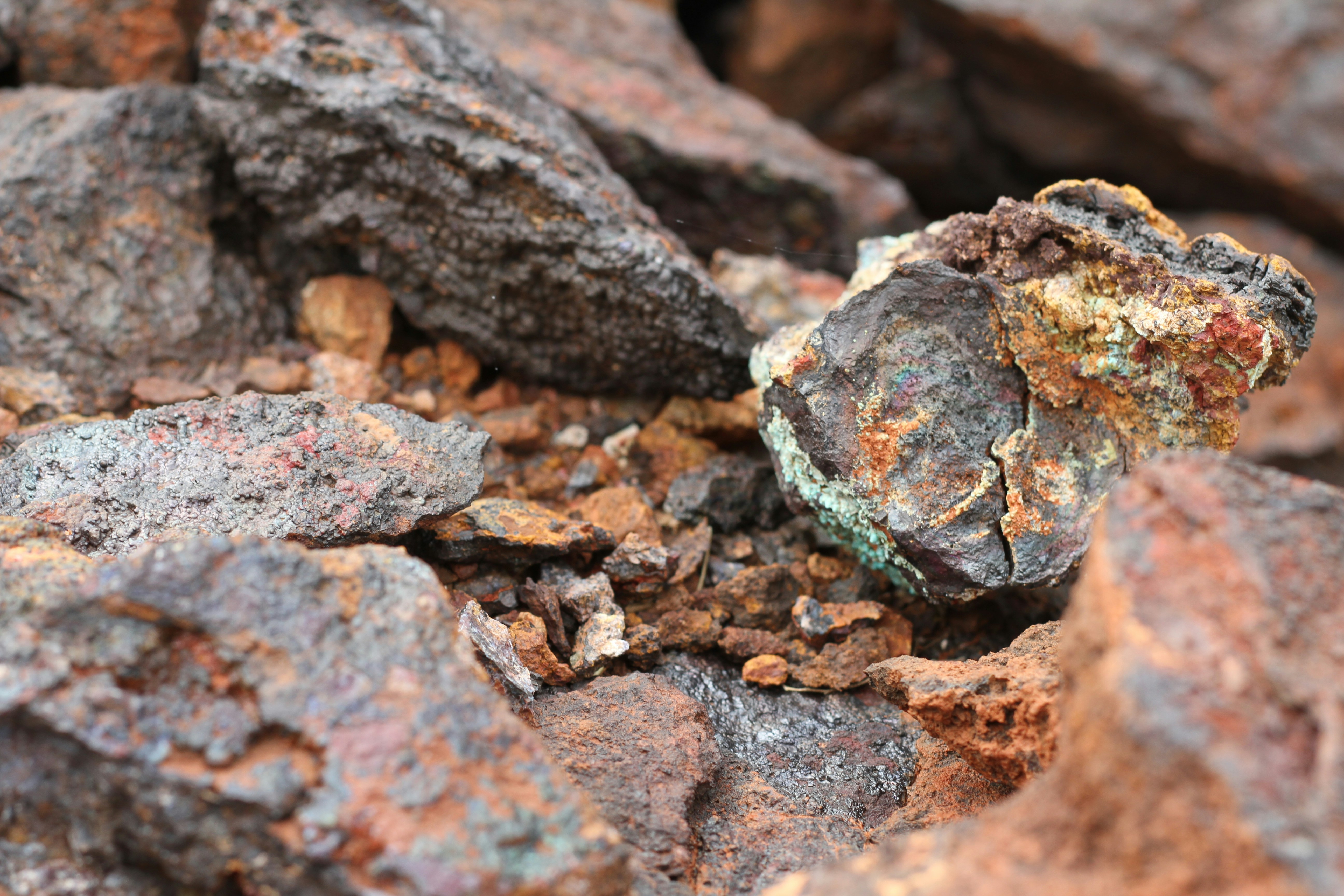Energy Fuels: U.S. Critical Minerals Leader Poised for Rare Earth Dominance

Energy Fuels closes $700M notes offering, boosting liquidity to $950M. The only U.S. uranium mill operator now scales rare earth oxide production through 2028.
- Energy Fuels closed a $700 million convertible notes offering in October 2025, catapulting total liquidity from $250 million to approximately $950 million establishing one of the strongest balance sheets in the U.S. critical minerals sector with no pre-existing corporate debt.
- The company owns and operates the White Mesa Mill in Utah, the only conventional uranium processing facility currently operating in the United States, with licensed capacity exceeding eight million pounds of uranium oxide annually.
- Proceeds fund a sixfold capacity expansion from 10,000 to 60,000 tonnes per annum of monazite feedstock by late 2026, positioning Energy Fuels as the first domestic commercial producer of heavy rare earth oxides (dysprosium and terbium) critical for defense and clean energy applications.
- The capital raise advances three strategic heavy mineral sands projects Donald in Australia, Bahia in Brazil, and Toliara in Madagascar collectively capable of supplying over 33,000 tonnes of monazite annually and reducing dependence on Chinese rare earth supply chains.
- Energy Fuels benefits directly from U.S. Department of Energy initiatives including the Strategic Uranium Reserve and federal critical minerals funding programs, while uranium spot prices remain elevated and rare earth import vulnerabilities drive bipartisan policy support.
Introduction: Critical Minerals at a Strategic Inflection Point
The convergence of energy security concerns, defense supply chain vulnerabilities, and clean energy mandates has thrust critical minerals to the forefront of U.S. industrial policy. Within this landscape, Energy Fuels Inc. (NYSE American: UUUU, TSX: EFR) has emerged as a uniquely positioned domestic producer capable of supplying both uranium for nuclear baseload power and rare earth elements essential to electric vehicles, wind turbines, and advanced weapons systems. The company's October 2025 convertible debt issuance represents more than a financing event it marks a strategic pivot from uranium-focused operations to integrated critical minerals production at scale.
Against a backdrop of rising enrichment capacity announcements like Urenco USA's 15 percent expansion by 2027 and regulatory approval for 10 percent enriched uranium production, the nuclear fuel cycle is tightening. Enrichment bottlenecks and fuel service constraints amplify the value of primary uranium production, particularly from low-cost domestic sources. Simultaneously, rare earth supply chain fragility 98 percent of U.S. magnet rare earths are imported, predominantly from China creates strategic imperative and commercial opportunity for vertically integrated North American producers.
Energy Fuels sits at the intersection of these dual imperatives. With the White Mesa Mill as both a uranium processing hub and rare earth separation facility, the company has built infrastructure that would take competitors years and billions to replicate. The $700 million capital infusion accelerates timelines across uranium, rare earth, and heavy mineral sands development, potentially establishing Energy Fuels as the dominant Western supplier of dysprosium and terbium oxides materials with no substitute in high-performance permanent magnets by 2027.
Company Overview: The Only Integrated U.S. Critical Minerals Platform
Energy Fuels operates the White Mesa Mill near Blanding, Utah, a 2,000-acre facility with annual licensed capacity exceeding eight million pounds of uranium oxide. Commissioned in 1980 and acquired by Energy Fuels in stages through 2012, the mill is the sole conventional uranium processing plant operating in the United States following the shutdown of competing facilities over the past two decades. This infrastructure monopoly provides Energy Fuels with structural advantages in permitting timelines, operating leverage, and strategic optionality unavailable to greenfield developers.
The company's uranium asset base includes two producing mines Pinyon Plain in Arizona and the La Sal Complex in Utah with production beginning at both sites in the fourth quarter of 2025. Combined 2025 guidance calls for processing 700,000 to one million pounds of uranium oxide and mining 875,000 to 1.44 million pounds of contained uranium. The development pipeline adds significant scale: Sheep Mountain in Wyoming, Roca Honda in New Mexico, and Bullfrog in Utah collectively hold approximately 70 million pounds of uranium oxide resources with potential annual production of six million pounds. Management targets increasing White Mesa processing rates to two million pounds annually by 2026, driven by low-cost Pinyon Plain ore with projected cash operating costs between $23 and $30 per pound.
Beyond uranium, Energy Fuels has pioneered rare earth oxide production at White Mesa, achieving commercial-scale output of neodymium-praseodymium oxide in 2024 and initiating pilot production of dysprosium and terbium oxides in August 2025. Current Phase 1 capacity processes 10,000 tonnes per annum of monazite concentrate; the planned Phase 2 expansion increases throughput to 60,000 tonnes by late 2026. Phase 3, still conceptual, envisions full vertical integration through metal alloy and magnet production by 2028, creating a complete North American supply chain independent of Chinese processing infrastructure.
The $700 Million Convertible Notes Offering: Capital Structure and Strategic Deployment
On October 3, 2025, Energy Fuels closed an upsized $700 million convertible senior notes offering, including full exercise of underwriters' overallotment options. The notes mature October 15, 2030, carry a 3.00 percent annual coupon payable semi-annually, and convert at approximately $12.00 per share representing a 30 percent premium to the offering price. This pricing reflects investor confidence in the company's growth trajectory while providing Energy Fuels with patient, low-cost capital structured to minimize near-term dilution.
“We are pleased to announce the completion of a significant financing milestone. This strategic capital raise strengthens our balance sheet and enhances our ability to accelerate our rare earth initiatives, including the expansion at our White Mesa Mill and Donald Project in Australia. We believe this outcome represents a clear vote of confidence in our team and strategy.” — Mark Chalmers, President & CEO
The transaction fundamentally resets Energy Fuels' financial profile. Pro forma liquidity increased from approximately $250 million as of June 30, 2025, to roughly $950 million in cash and marketable securities, with no pre-existing corporate debt prior to the notes issuance. This capital cushion exceeds the combined market capitalizations of multiple junior uranium and rare earth developers, providing Energy Fuels with strategic flexibility to pursue opportunistic acquisitions, accelerate development timelines, or weather commodity price volatility without distressed capital raises.
Management allocated proceeds across three priority areas: expanding rare earth separation capacity at White Mesa through Phase 2 and Phase 3 investments; advancing the Donald, Bahia, and Toliara heavy mineral sands projects toward final investment decisions; and strengthening U.S. uranium operations through mine development and working capital. The heavy mineral sands projects are particularly strategic Donald in Australia targets first-phase production of 7,000 tonnes of monazite annually with a final investment decision expected December 2025; Bahia in Brazil is 100 percent owned with resource estimates expected in 2025-2026; and Toliara in Madagascar represents a world-class asset with 26,000 tonnes per annum monazite capacity over a 39-year mine life, pending stability agreements and a 2026 FID target.
Strategic Significance: Rare Earth Supply Chain Sovereignty
The geopolitical dimension of Energy Fuels' rare earth expansion cannot be overstated. China controls approximately 90 percent of global rare earth refining capacity and 98 percent of magnet rare earth supply to the United States, creating acute vulnerabilities in defense, aerospace, and clean energy supply chains. Dysprosium and terbium—the "heavy" rare earths Energy Fuels will produce commercially by late 2026—are essential additives in neodymium-iron-boron magnets, improving heat resistance and coercivity for applications in F-35 fighter jet actuators, wind turbine generators, and electric vehicle traction motors. No viable substitutes exist for these materials in high-performance applications.
Energy Fuels' integrated approach—from monazite ore sourcing through oxide separation at White Mesa—bypasses Chinese processing infrastructure entirely. The company's partnership with Astron on the Donald project and development of Toliara provide feedstock diversification beyond U.S. sources, mitigating geopolitical concentration risk while maintaining processing and value-add activities domestically. Phase 2 expansion to 60,000 tonnes per annum monazite throughput positions White Mesa as the largest rare earth separation facility outside China, with capacity sufficient to meet substantial portions of U.S. defense and industrial demand.
The commercial viability of this strategy has improved markedly. Rare earth oxide prices have stabilized following 2022-2023 volatility, with neodymium-praseodymium oxide trading near $50 per kilogram and dysprosium oxide exceeding $350 per kilogram as of mid-2025. More importantly, policy support has crystallized: the U.S. Department of Defense continues awarding contracts for domestic rare earth production, the Inflation Reduction Act provides tax incentives for critical minerals processing, and bipartisan legislation like the CHIPS and Science Act embeds rare earth supply chain development in national security infrastructure planning. Energy Fuels' eligibility for Strategic Uranium Reserve participation and critical minerals funding provides additional revenue visibility and de-risks expansion capital.
Current Activities: Execution Milestones Through 2028
Energy Fuels' operational roadmap for 2025-2028 balances near-term production ramp with medium-term capacity expansion. The fourth quarter of 2025 marks the commencement of Pinyon Plain ore processing at White Mesa, expected to lower uranium cash operating costs to the $23-$30 per pound range—among the lowest in North America. Contracted uranium sales provide revenue visibility with 300,000 pounds scheduled for 2025 delivery escalating to 880,000 pounds in 2026, all to U.S. utility customers under multi-year agreements extending through 2030.
The Phase 2 rare earth expansion feasibility study, expected completion October-November 2025, will detail capital requirements, operating costs, and production timelines for the 60,000 tonne per annum monazite expansion. Commercial production of dysprosium and terbium oxides is targeted for the fourth quarter of 2026, establishing Energy Fuels as the first mover in domestic heavy rare earth supply. Pilot operations initiated August 2025 demonstrate technical feasibility; the Phase 2 expansion scales proven processes rather than pioneering untested separation chemistry.
Parallel advancement of heavy mineral sands projects creates optionality in feedstock sourcing. The Donald joint venture with Astron targets December 2025 for a Phase 1 final investment decision covering 7,000 tonnes annual monazite supply. Bahia resource definition work continues through 2025-2026, with Energy Fuels holding 100 percent ownership and development flexibility. Toliara remains the flagship long-term asset: 26,000 tonnes per annum monazite capacity over 39 years would supply White Mesa at Phase 2-3 scale for decades, though regulatory approvals and stability agreements with the Malagasy government must be secured before a 2026 FID proceeds. The $700 million capital raise de-risks all three projects by eliminating near-term financing constraints.
The Investment Thesis for Energy Fuels
- Acquire exposure to the only U.S. uranium mill operator as enrichment capacity constraints and reactor restarts tighten primary supply, targeting $60-$75 per pound uranium pricing scenarios by 2027.
- Position for domestic rare earth supply chain development ahead of anticipated Department of Defense procurement contracts and critical minerals stockpiling initiatives expected 2026-2027.
- Diversify into integrated critical minerals producers with operational assets rather than development-stage explorers if heavy rare earth oxide prices sustain above $300 per kilogram through 2026.
- Monitor White Mesa Phase 2 feasibility study results in Q4 2025 for capital efficiency metrics; target entry if all-in costs remain below $40 per kilogram for separated dysprosium oxide.
- Evaluate accumulation strategies following Toliara final investment decision announcement, anticipated mid-2026, which would secure 39-year feedstock visibility and eliminate major development risk.
- Consider hedging through paired trades versus Chinese rare earth producers if U.S.-China trade tensions escalate, as Energy Fuels' production growth directly displaces import dependency.
Investor Takeaway: Asymmetric Exposure to Critical Minerals Policy
Energy Fuels' $700 million convertible notes offering transforms the company from a regionally significant uranium producer to a nationally strategic critical minerals platform. The capital raise removes financing uncertainty across rare earth expansion, heavy mineral sands development, and uranium production scaling—historically the primary risks for junior mining companies. With approximately $950 million in liquidity, Energy Fuels possesses financial staying power through commodity cycles and regulatory timelines that competitors cannot match without dilutive equity raises or project delays.
The rare earth expansion represents the company's most significant value driver. Commercial dysprosium and terbium oxide production by late 2026 positions Energy Fuels as the sole Western producer outside Chinese control, creating strategic buyer relationships with defense contractors, automotive OEMs, and wind turbine manufacturers seeking supply chain diversification. Phase 3 concepts extending into metal alloy and magnet production would capture additional margin, though near-term value accrues primarily from oxide separation capacity.
Uranium operations provide cash flow stability and leverage to nuclear policy developments. Urenco USA's enrichment expansion and regulatory approval for 10 percent enriched uranium production highlight tightening fuel cycle capacity—constraints that elevate the strategic value of domestic primary production. Energy Fuuls' contracted sales through 2030 and low-cost Pinyon Plain production buffer downside risk while maintaining upside participation in sustained uranium price strength. The convergence of energy security imperatives, defense supply chain vulnerabilities, and clean energy mandates creates a multi-year tailwind for integrated U.S. critical minerals producers—positioning Energy Fuels among the few publicly traded vehicles capable of delivering diversified exposure to this investment theme.
TL;DR
Energy Fuels closed a $700 million convertible notes offering in October 2025, increasing liquidity to approximately $950 million—the strongest balance sheet in U.S. critical minerals. The capital funds rare earth expansion at the White Mesa Mill (the only operating U.S. uranium facility) to 60,000 tonnes per annum monazite capacity by late 2026, establishing first-mover commercial production of dysprosium and terbium oxides. Proceeds also advance three global heavy mineral sands projects providing long-term feedstock security. With contracted uranium sales through 2030, low-cost production ramping, and direct policy support from DOE programs, Energy Fuels offers integrated exposure to uranium and rare earth supply chain sovereignty as enrichment constraints tighten and Chinese import dependencies drive bipartisan federal action.
FAQs (AI-Generated)
Analyst's Notes




Subscribe to Our Channel
Stay Informed












































